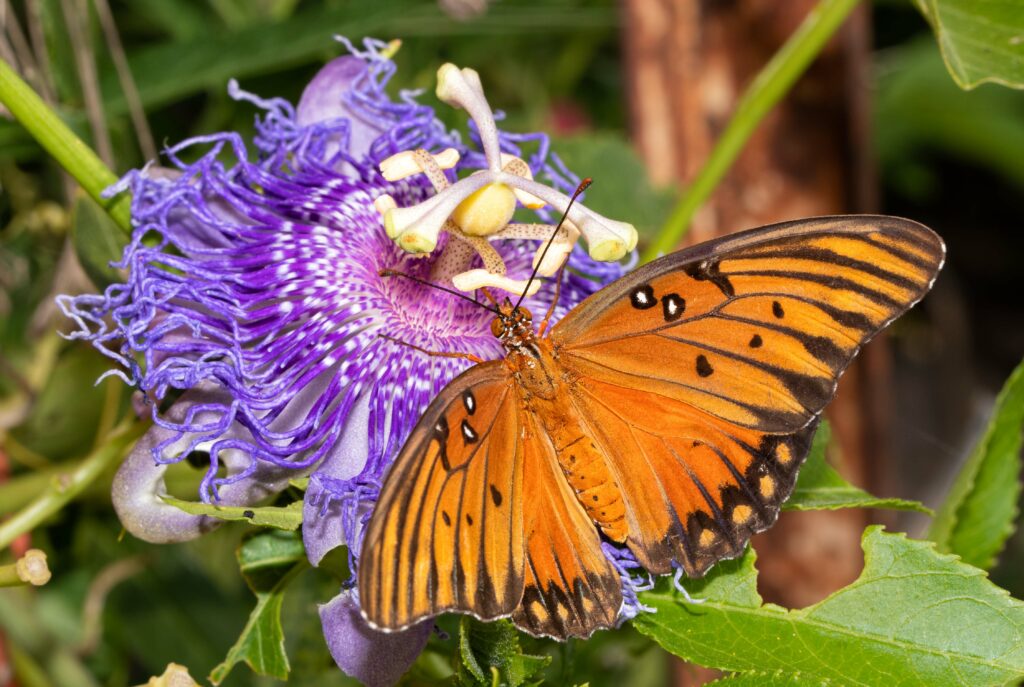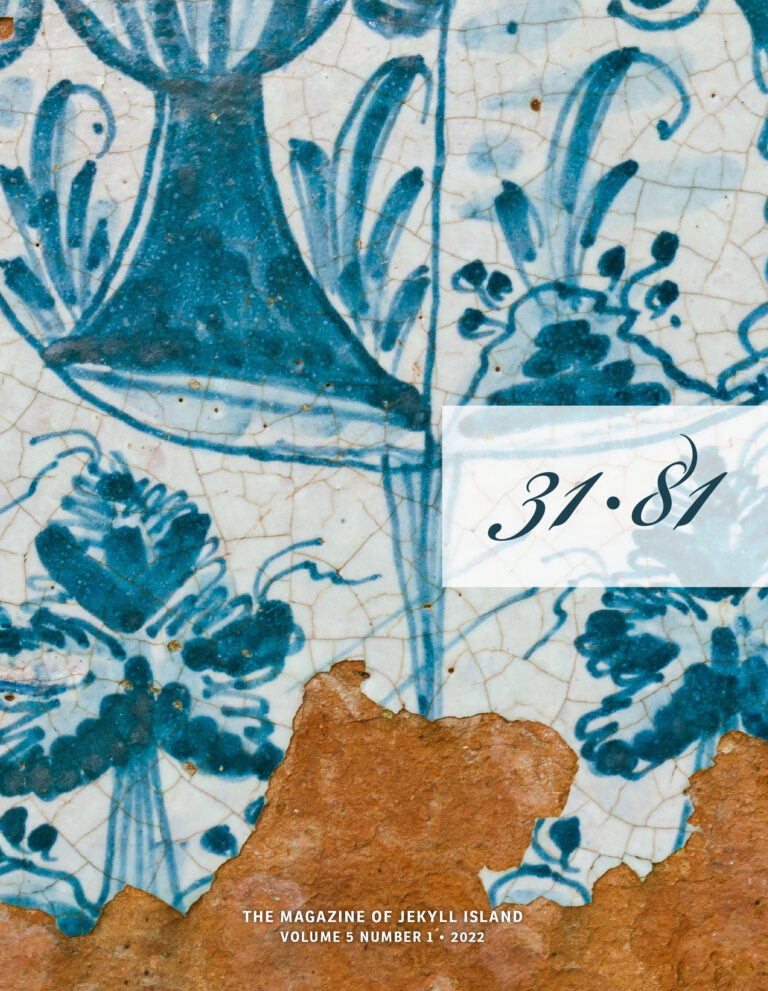When temperatures drop, butterflies fill the island air
By Candice Dyer
Naturalists call it the “Atlantic flyway,” that strip of shoreline stretching from Canada to Florida that migratory butterflies cruise, pausing only periodically along the way to sip nectar.
The most prevalent of the bright orange butterflies that frequent Jekyll, Gulf Fritillaries, stop to unreel their proboscises into flowers growing in the dunes. Purple passionflowers are the snack of choice for these butterflies and act as one of the primary hosts for the Gulf Fritillaries’ larvae, which morph into hungry caterpillars that eat the host plant.
You typically can observe three types of butterflies on Jekyll:
the Cloudless Sulphur, a chartreuse-colored insect with rounded wingtips; the regal and iconic Monarchs that resemble stained glass; and the most plentiful but misunderstood of the island’s butterflies, the Gulf Fritillaries, which recently have been the subject of some in-depth research. The latter two resemble each other in coloring. Monarchs bear stripes, while their lookalikes feature more spots. Monarchs tend to flap, hover, and then glide; Gulf Fritillaries are constantly flapping their wings.
“The vast majority of the public assumes the Gulf Fritillaries are Monarchs,” says Jekyll Island Authority wildlife biologist Joseph Colbert. “I have even seen social media and journal articles misidentify Gulf Fritillaries as Monarchs. We would like to raise awareness of them.”
Last September, Colbert and his colleagues counted more than 42,000 Gulf Fritillaries in a single day, the island’s biggest counting day ever. The research, done with partners in the Butterflies of the Atlantic Flyway Alliance, demonstrates Jekyll Island’s important role as a stopover for the gorgeous insects during their trek south between August and October.
The most Monarchs documented in a day is a little more than 300.
The butterflies are a lepidopterist’s dream. Yet Colbert warns: Look, but don’t disturb.
“They don’t always pass through in such numbers,” Colbert says, “since conditions like wind direction, sunniness vs. cloudiness or rain, and temperature seem to make a difference. What is certain is that there are days like that, and the Atlantic Migratory Flyway and Jekyll Island are significant to these species while they make their southbound journey.”
A good place to observe the beauty of these butterflies is on the beach. They gather at the south end of Jekyll and whoosh toward Cumberland Island, creating their own soft breezes along the way.



